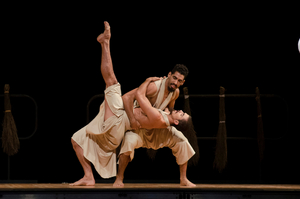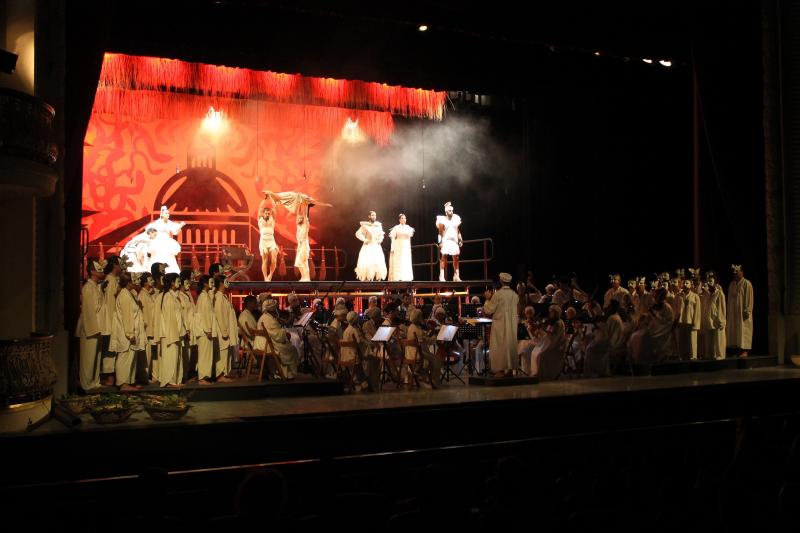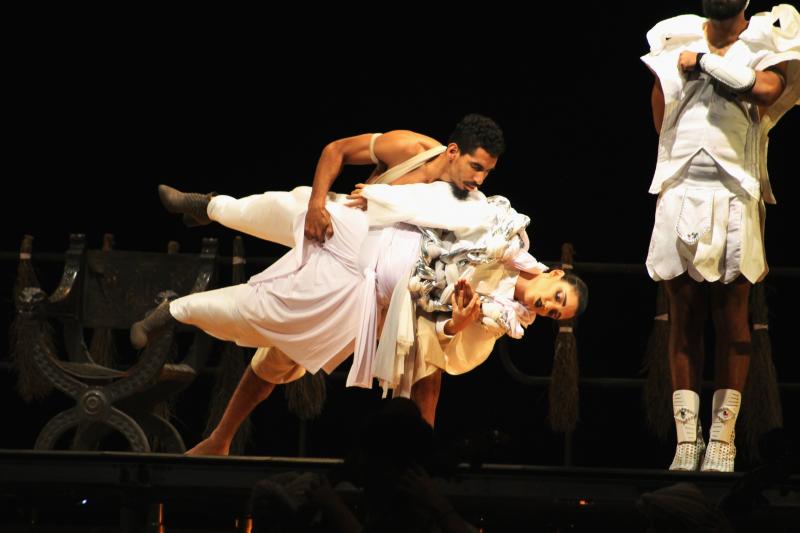Review: WORLD STAGES: LA CLEMENZA DI TITO at The Kennedy Center

La Clemenza di Tito (known in English as The Clemency of Titus) premiered at the Havana Mozart Festival in 2019. Adapted by Norge Espinosa and directed by Carlos Diaz, the production transposes the Roman Empire onto the island of Cuba, and features musicians, singers, and dancers in addition to the traditional operatic roles. Dialogue has been translated into Spanish, while the songs remain in the traditional Italian; Kennedy Center provides projections with English subtitles for the audience, creating an interesting trilingual experience.
La Clemenza di Tito takes place after Tito (referred to as "Titus" in English) has usurped the king of an island nation and has assumed the position of Roman Emperor over the island. He is the subject of admiration and scorn of Vitellia, whose father he deposed and who feels betrayed when she realizes he doesn't love her or intend to marry her. Instead, he summons Sesto, who is in love with Vitellia, and Annio to declare his intention to marry Sesto's sister, Servilia; Annio, who is in love with Servilia, is tasked with breaking the news. Upon hearing this, Servilia confesses her love for Annio and Tito consents to allowing the two to marry instead. Vitellia only hears of Tito's intentions toward Servilia, and, in a fit of rage, convinces Sesto to prove his love to her by killing Tito, promising he can rule beside her. It is only after Sesto sets off on his task that Vitellia is summoned with the news that she is to be Tito's wife after all, but by then it is too late to stop Sesto's plan. The capitol is set on fire, and Sesto commits the deed during the ensuing chaos, but immediately feels regretful as news of Tito's death spreads. When it is revealed that Sesto stabbed the wrong man in the confusion, and that both Tito and the man are alive, Sesto, wracked by guilt, goes before the Senate to confess his crimes. Tito meets with him privately, attempting to understand before sentencing his friend to death, but he decides on his own that he would rather be known for a tendency toward mercy than wrath. During Sesto's public confession, Tito prepares to grant him clemency, but is surprised when Vitellia confesses her part in the plot as well. Tito eventually grants them both reprieve.

As the titular Tito, Bryan López cuts a striking figure with an equally commanding voice. He anchors the show, even when only waiting in the background, and it's easy to see how the other characters gravitate around him. Anyelín Díaz's Vitellia and Kirenia Corzo's Servilia are beautifully opposing characters - Díaz consistently holds herself still, posed and poised, while Corzo presents a much more relaxed and approachable demeanor. In a unique casting decision, Annio and Sesto are each played by women. Lesby Bautista's Annio is endearing, and her duets with Corzo and Cristina Rodríguez's Sesto are beautiful. Rodríguez, as Sesto, steals the show with her emotional second act solo. Ahmed Gómez's Publio rounds out the cast, and adds a bit of levity with his physical humor as well as his vocal chops.
Alongside the cast are the dancers of Compañía OtroLado, whose lyrical movements and haunting presence throughout the show (sometimes taking on the role of the Fates, other times expressing inner struggles) were utterly entrancing. In many ways, a performance of just these dancers would have been just as powerful and dynamic as a full production.
What's immediately striking about Diaz's production is the staging. The performance features the wonderful Havana Lyceum Orchestra (led by Musical Director José A. Méndez), which is placed directly on the stage. A platform is constructed over them for the majority of the show's action; while this split performance maintains the stage/pit feeling while giving the orchestra a more prominent place, it does pose a slight issue for those in orchestra seating to see some of the dancers' floor work. The platform does also put the cast closer to the projected translations, which would be useful in most cases, but, unfortunately, the projections in the Kennedy Center production often froze, skipped ahead, or were otherwise off from the performance; I was fortunate enough that my Spanish is decent and I was able to follow the dialogue on my own, but I definitely felt a little lost during some of the songs. Additionally, the decision to place the NEWorks voices of America Choir on the stage in front of the orchestra did occasionally make the stage feel overcrowded.
Although this production is meant to be placed in Cuba, there are only a few indicators of this change, mostly Celia Ledón's costumes. The entire orchestra is dressed in white linen blouses, pants, and headscarves, and sits barefoot. Méndez, as the conductor, follows this style, but adds a Roman flair with a gold laurel and an intricately knotted overlay. The dancers wear flesh-coloured costumes that wouldn't look out of place on an island, but the main cast members wear white outfits that are a blend of Roman, older European, and folk influences. The other main Cuban element isn't really introduced until the second act, when the orchestra adds a drum beat to their pieces and the dancers' previously lyrical movements incorporate more traditional Cuban steps - these performances in Act II were absolute standouts, and my only disappointment was that they were so few in number.

Overall, La Clemenza di Tito is an interesting take on the beloved Mozart piece, though it feels very rough as a production, and the Kennedy Center's Eisenhower Theater may not be the ideal venue for this staging. But with a fabulous cast, team of dancers, and orchestra, it still makes for an enjoyable evening.
La Clemenza di Tito plays at the Kennedy Center as part of the World Stages series through February 15. Performance run time is approximately two and a half hours with one intermission. Information on tickets and accessibility can be found on the Kennedy Center website.
Photos courtesy of Havana Lyceum Orchestra
Reader Reviews
Videos

